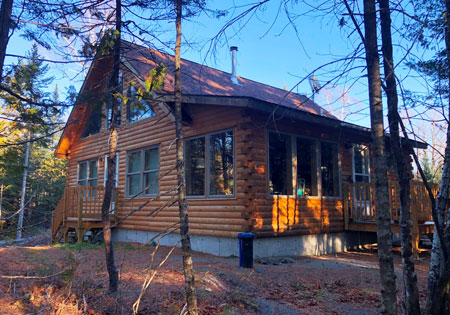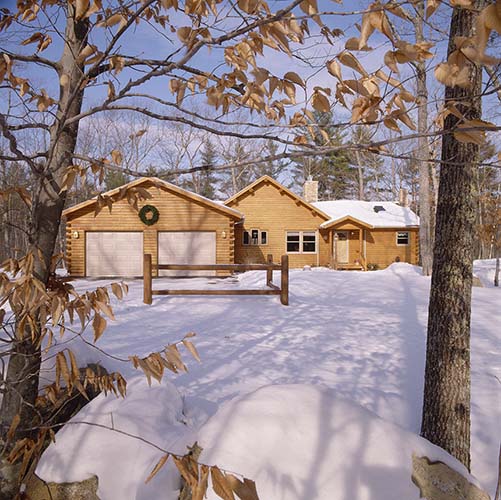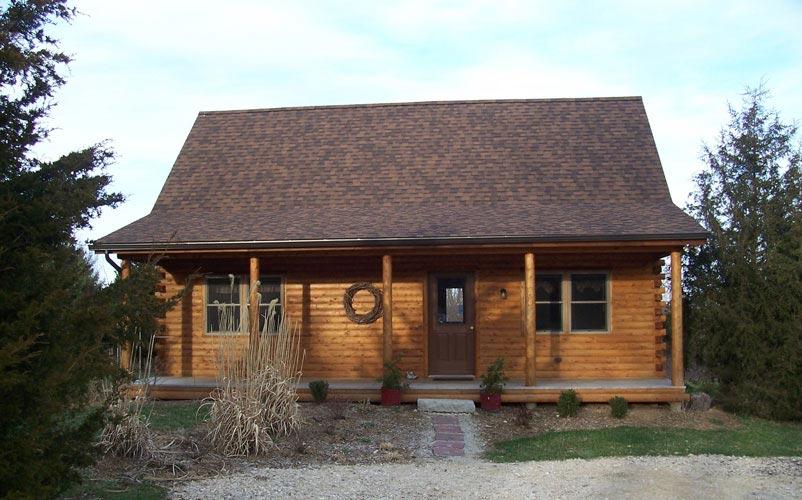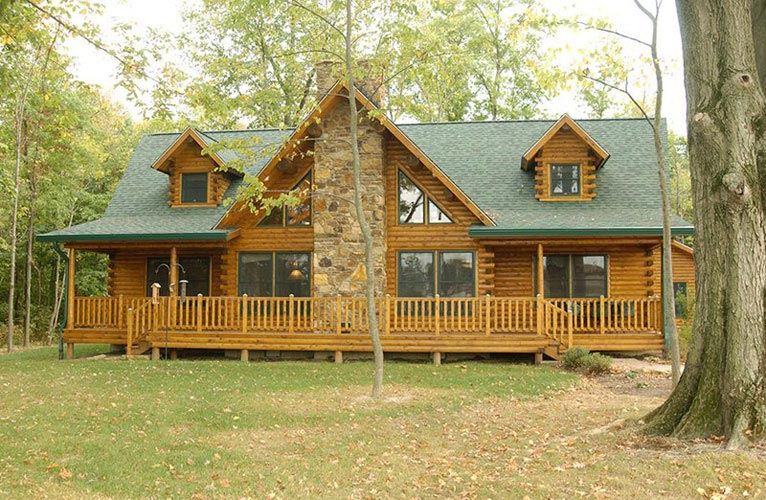How to Protect Your Log Cabin From the Elements
Posted by Ward Cedar Log Homes in Home Care and Maintenance Home Design/Square Footage Log Homes
How to Protect Your Log Cabin From the Elements
Log cabins evoke a sense of nature, helping the owner enjoy a more rustic way of life. With this, the thick, impressive logs speak of hardiness to thrive in even the harshest of conditions. However, while timber is a durable product that does have some strong natural insulative properties, it is important to give a log cabin the proper attention to ensure that it lasts as long as possible. With this in mind, the following 5 points of advice can help you protect your log cabin from the elements.
Choose the Correct Windows

Most people living in log cabins will experience snow for at least a portion of the year. As a result, it is necessary that the cabin be structured to withstand the conditions that may ensue: freezing and thawing, blustery wind, and impact from falling branches.
While these conditions will put all areas of the log cabin to the test, the windows are one area that is likely to receive the brunt of the punishment. Whether it be freezing and thawing causing the seals to crack, projectiles damaging the glass itself, or simply old windows that can no longer insulate against the snowy temperatures, poor windows are a threat to undermine the entire cabin.
To ensure the highest quality windows for your log cabin, the following are some excellent ideas:
- Installing hurricane grade windows to withstand heavy winds and impact during blustery conditions
- Adding trim to create more protection around the frame
- Choosing Low-E glass to absorb sunlight and radiate heat into the cabin throughout the day
Insulate the Foundation
Moisture is one of the most immediate threats to a log cabin, and nowhere can moisture wreak more havoc than through the below-grade areas of the building. When moisture infiltrates the foundation, it can cause the foundation to shift, which will lead to a litany of other issues that can be difficult and costly to repair.
Therefore, it is a good idea to add some below-grade insulation to your log cabin. Not only will this help protect against moisture damage, but it will also prevent heat from escaping. As an additional measure, it is recommended to waterproof the foundation walls. This involves coating the walls with a permeable membrane that moves water from the soil down to a drainage board and away from the cabin’s foundation, guaranteeing foundational integrity during times of heavy melting and water flow.
Rigorously Seal Any Cracks
 There are a couple of types of log cabins. There are those that stack and bind logs directly to each other, in which case the logs themselves serve as the framing, insulation, and siding. Then there are those that are framed similarly to normal houses, perhaps using some type of structural framing panel and foam insulation, over which log facade cladding is applied.
There are a couple of types of log cabins. There are those that stack and bind logs directly to each other, in which case the logs themselves serve as the framing, insulation, and siding. Then there are those that are framed similarly to normal houses, perhaps using some type of structural framing panel and foam insulation, over which log facade cladding is applied.
While both approaches should be well sealed and airtight, those log cabins that stack logs directly onto one another require extra vigilance, as there are not multiple insulation layers to protect against air and moisture infiltration. As such, it is critical that the cabin owner be well versed in applying sealants, such as caulking or weatherstripping, to keep the structure as weather-proof as possible.
Incorporate Large Roof Overhangs
 As mentioned, water can be a significant concern for log cabins. Logs that develop moisture content above 15% are at risk of mildew, mold, blistering, and log rot.
As mentioned, water can be a significant concern for log cabins. Logs that develop moisture content above 15% are at risk of mildew, mold, blistering, and log rot.
While foundation insulation is a great choice for protecting the cabin’s below-grade areas from moisture, incorporating a larger-than-normal roof overhang can help ensure that the above-ground elements of the cabin remain dry. By adding a large roof overhang, you can increase the likelihood that melting snow and other runoff lands far enough away from the cabin that it will not get absorbed into the logs. In addition, a larger overhang creates more shade that will protect the windows and siding during the warmer months.
Pay Attention to Outbuildings
Finally, owners of log cabins are likely to have a plethora of accessories that need protection. Whether it be an extra large shed for storing skis, snowmobiles, and ATVs, a smaller shed for snow shovels and ice melt, or simply a regular garage to keep your personal vehicles out of the weather, it is critical that your outbuildings be kept in good condition so that your belongings are protected. Some ways to guarantee the structural integrity of your log cabin’s outbuildings include installing a garage door pergola, adding garage floor paint to create a waterproof garage floor, and adding insulation to the building’s walls.
5 Steps to Protect Your Log Cabin From the Elements
Log cabins are a favorite among homeowners thanks to their natural, durable appearance. And while timber is a great material for thriving in harsh, wintry conditions, there are some steps that should be taken to help protect a log cabin as much as possible. To this effect, choosing the correct windows, insulating the foundation, sealing all cracks, incorporating large roof overhangs, and paying attention to the outbuildings are 5 ways to help protect your log cabin from the elements.
Todd Gillman is the content director for the Innovative Building Materials blog and a content writer for the building materials industry. He is focused on helping fellow homeowners, contractors, and architects discover materials and methods of construction that save money, improve energy efficiency, and increase property value.
Contact us today to begin your log home journey.
Be sure to follow us on Facebook, Pinterest, and Instagram for inspiration, events, tips and more!


Post Your Comment